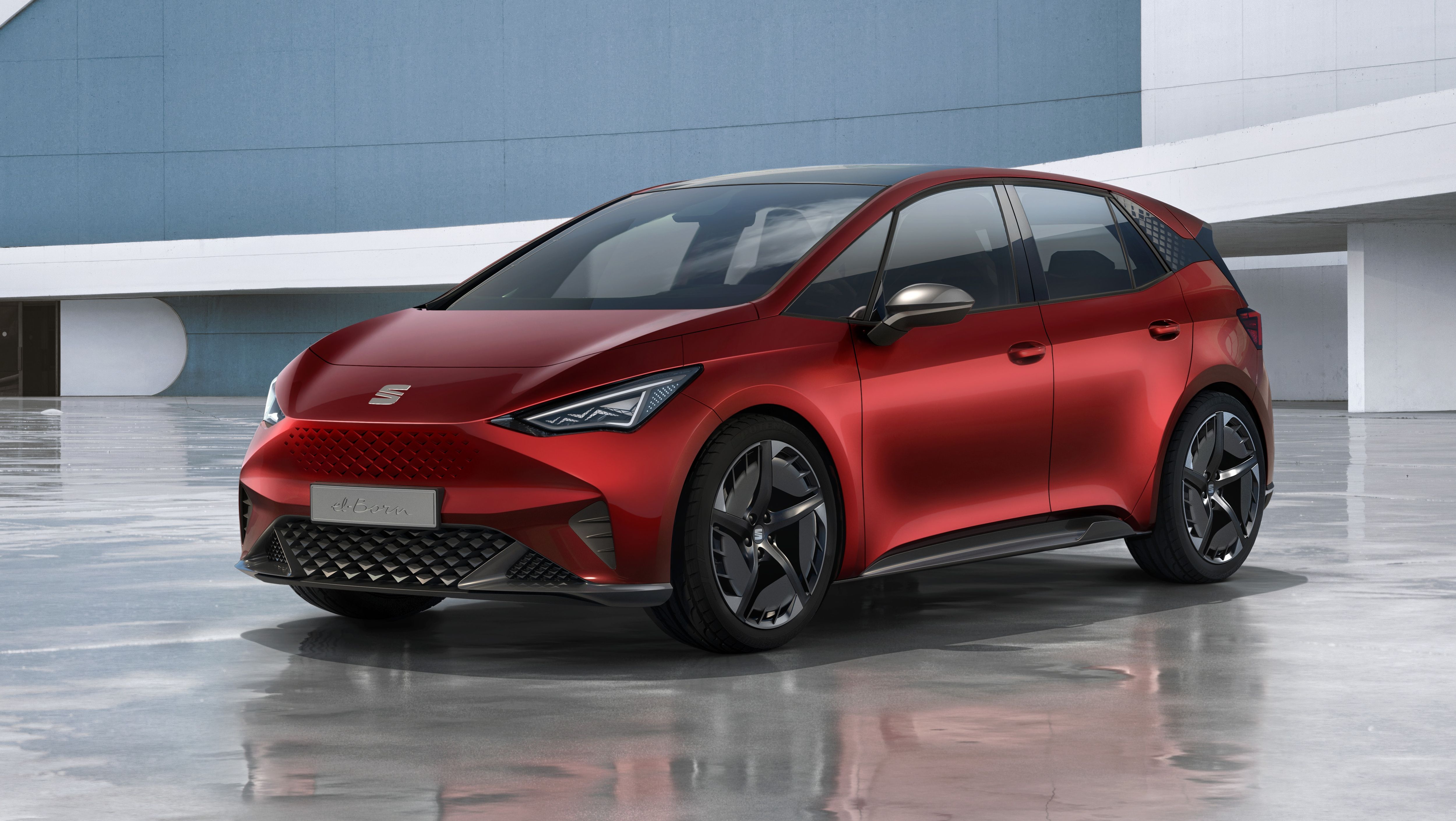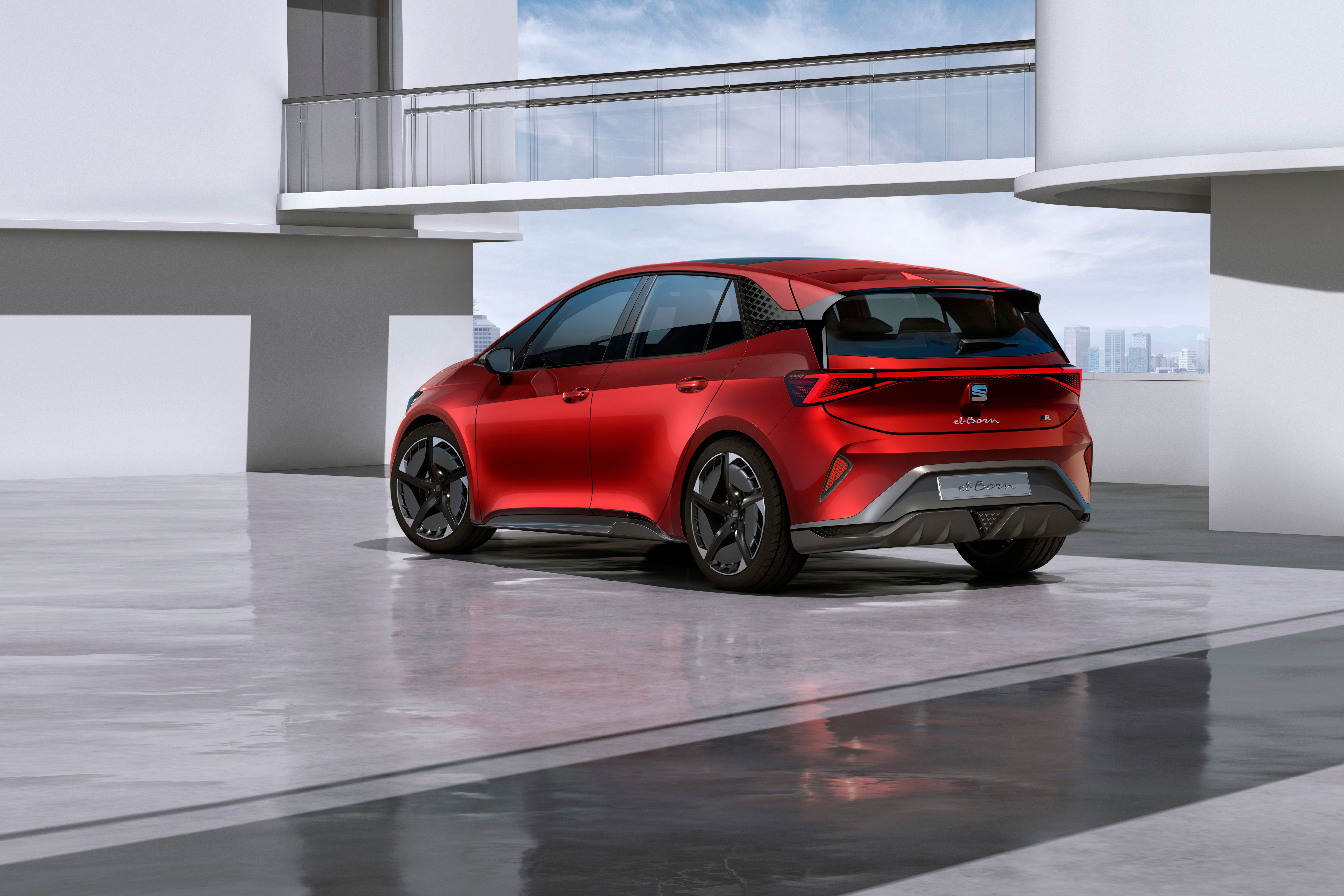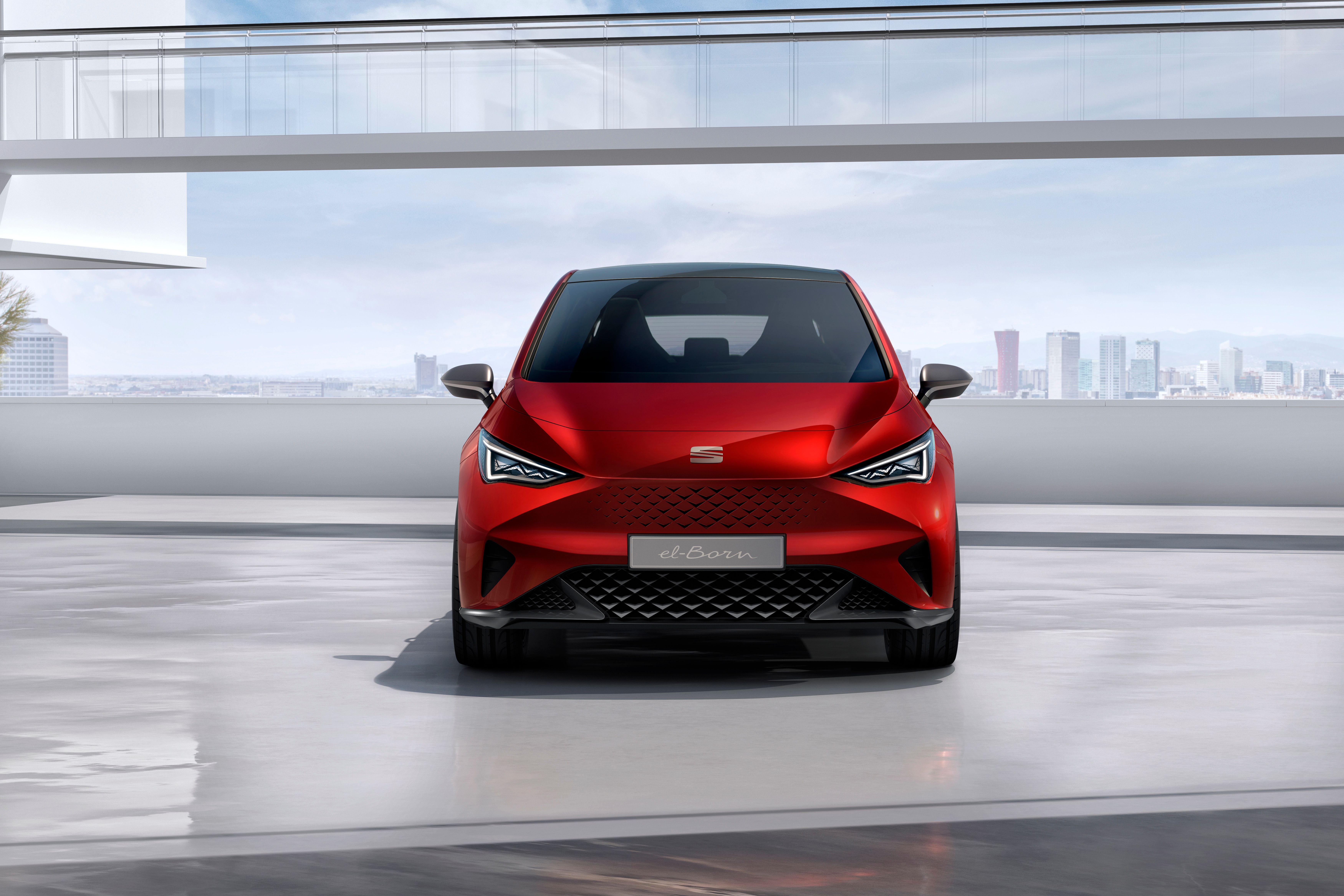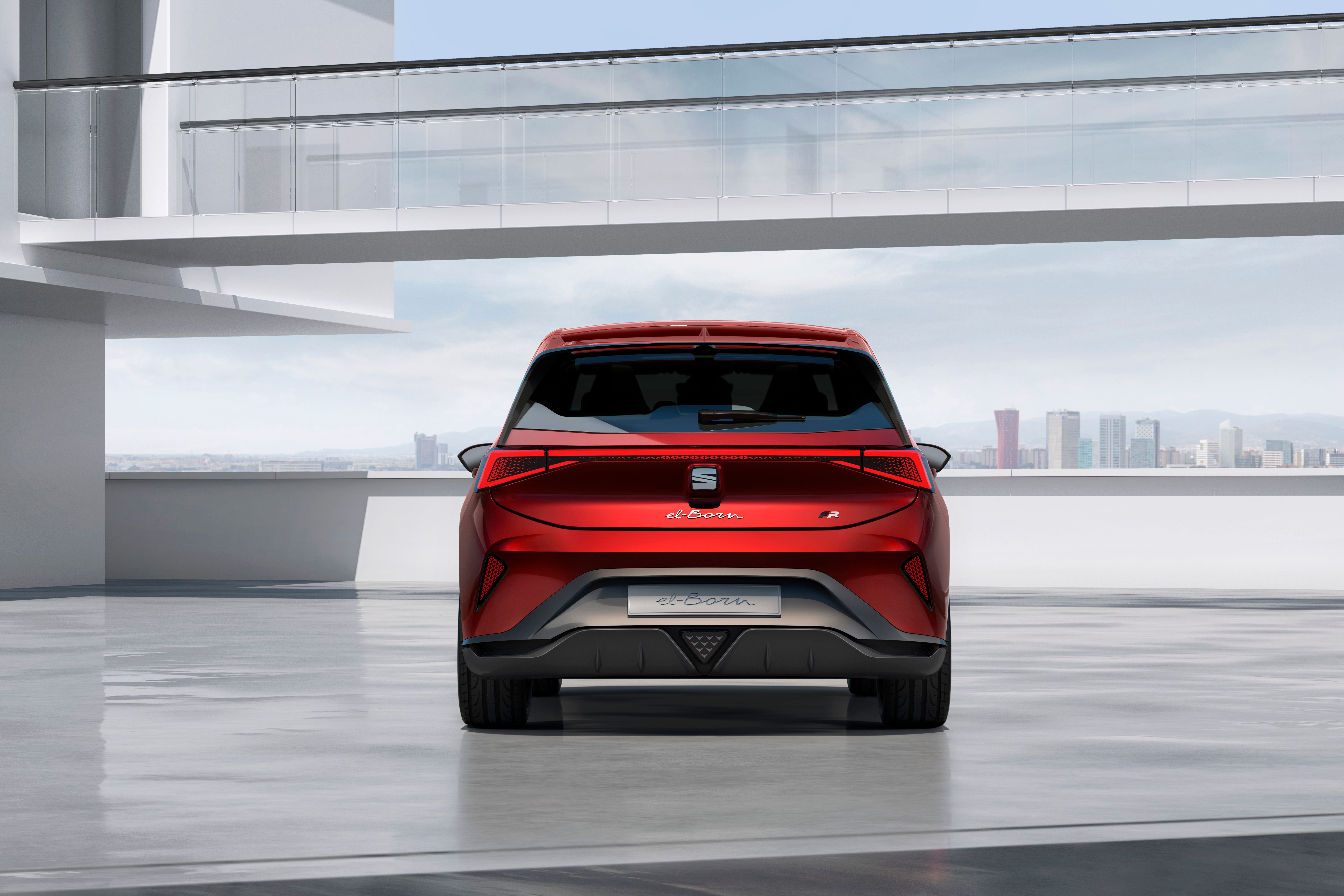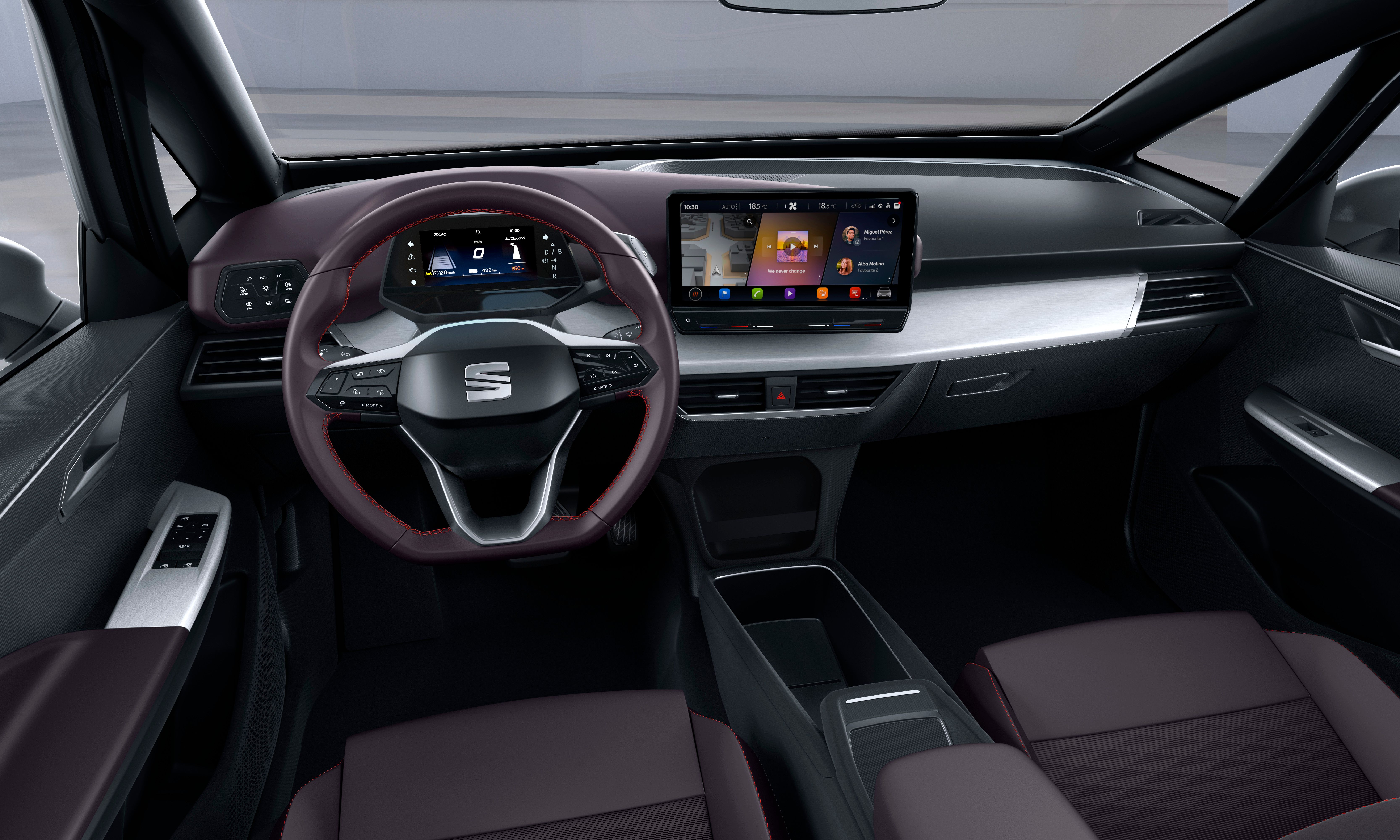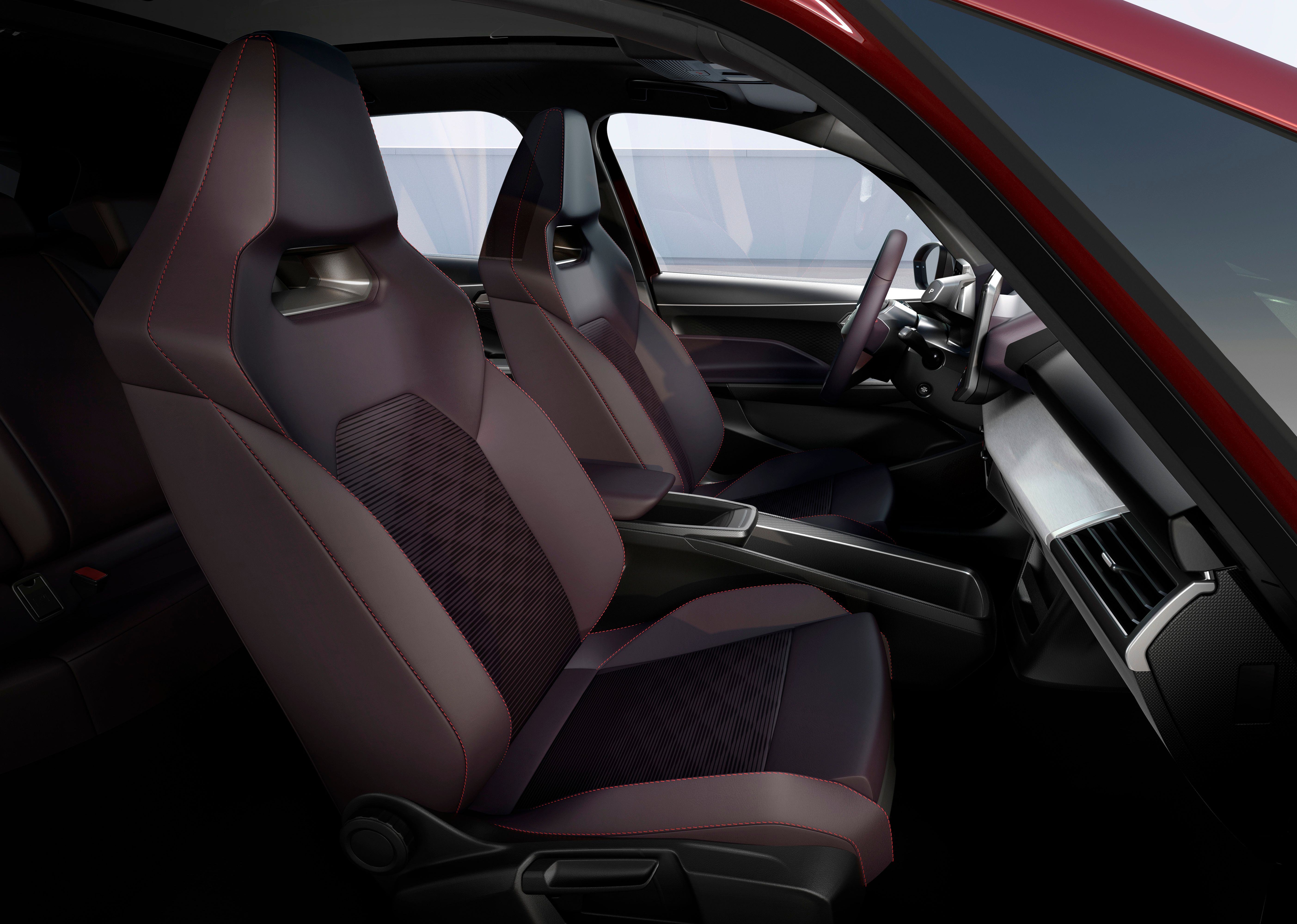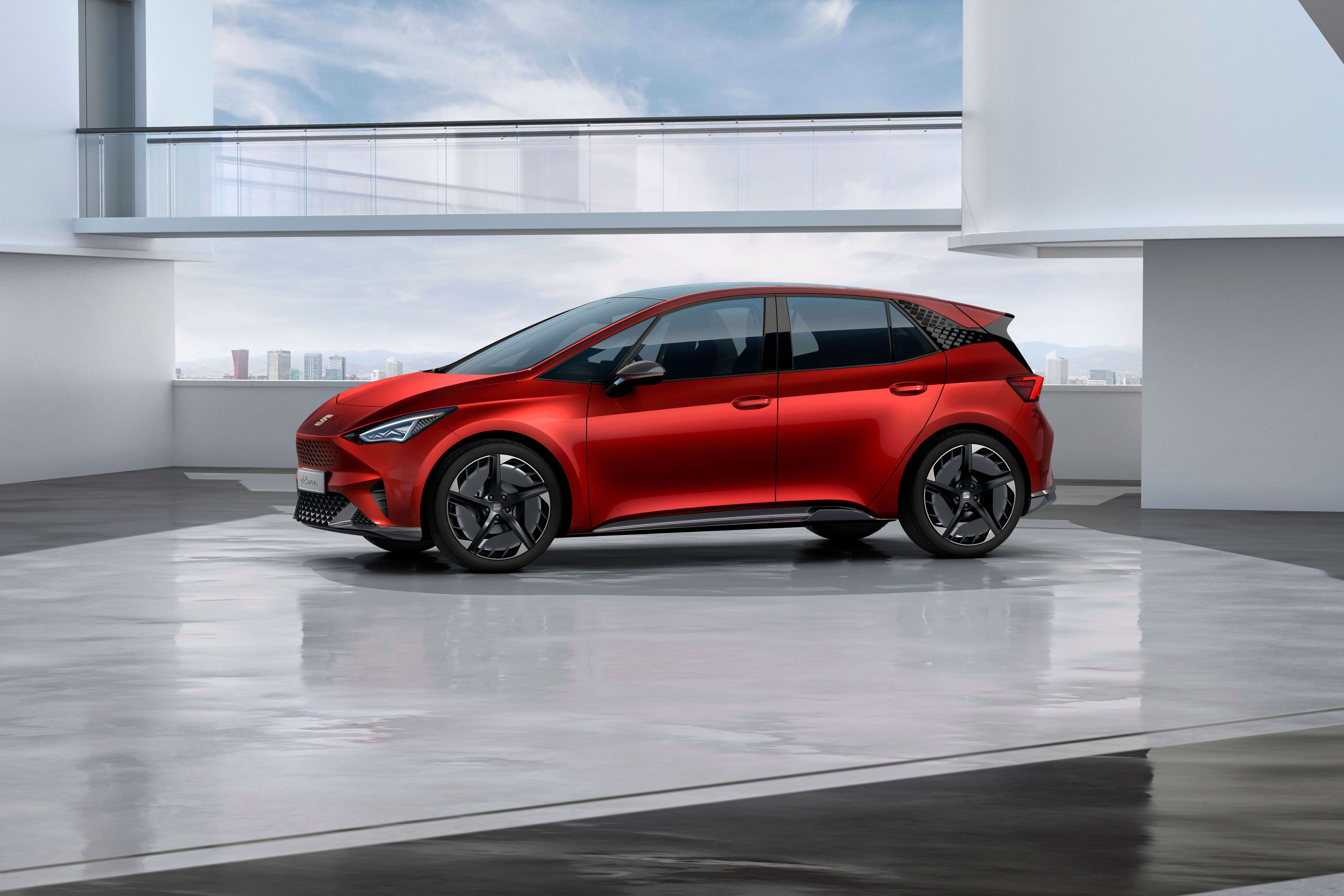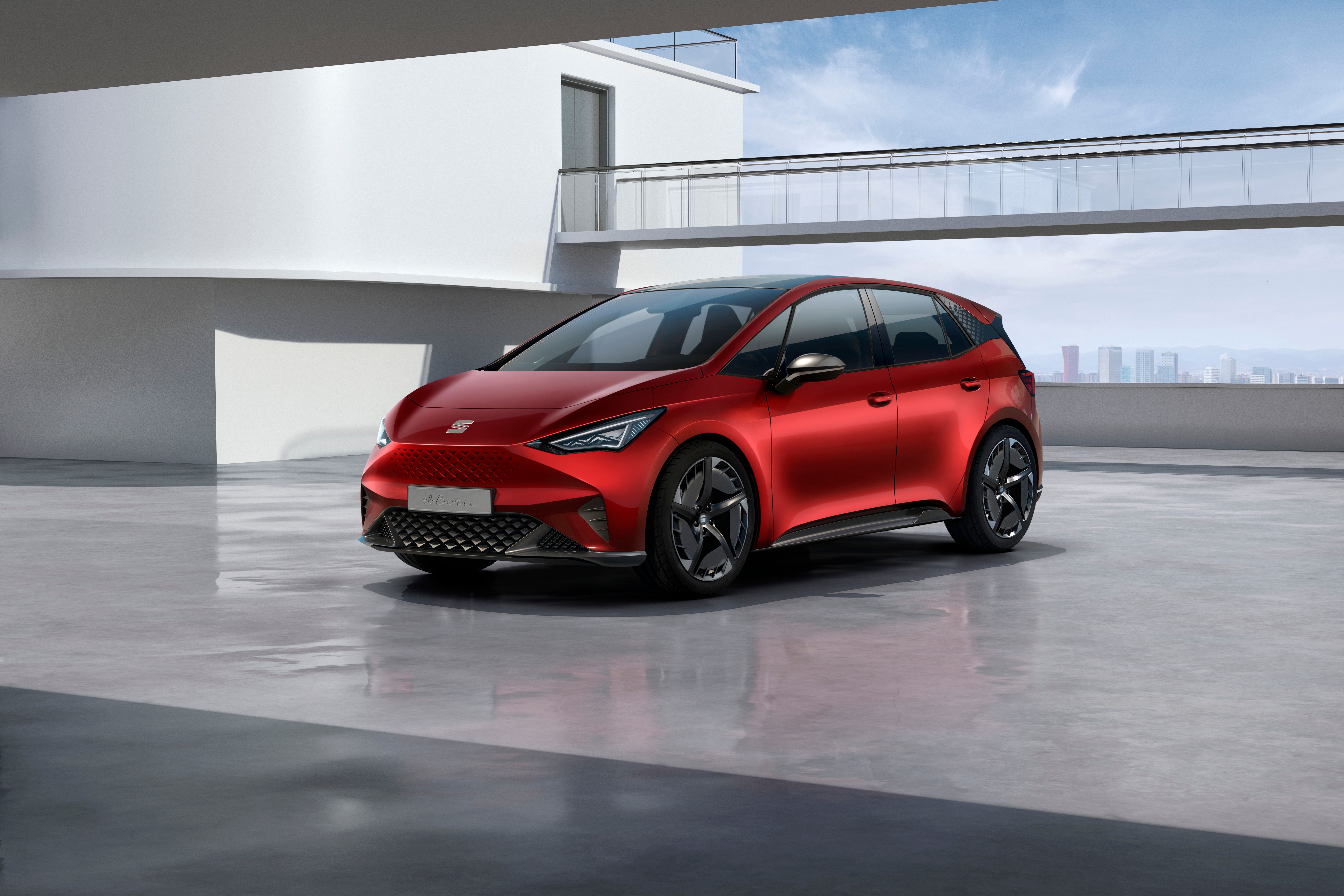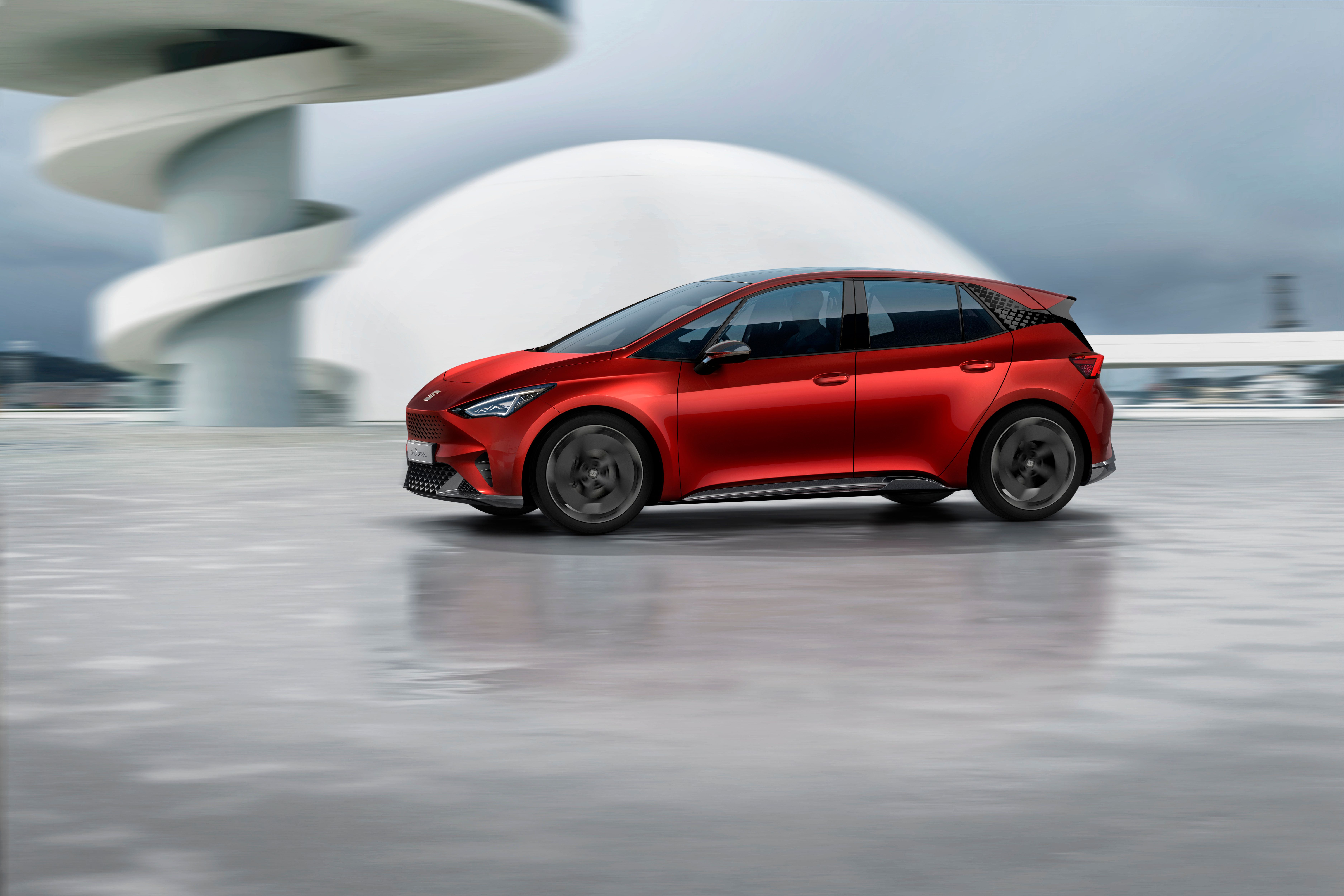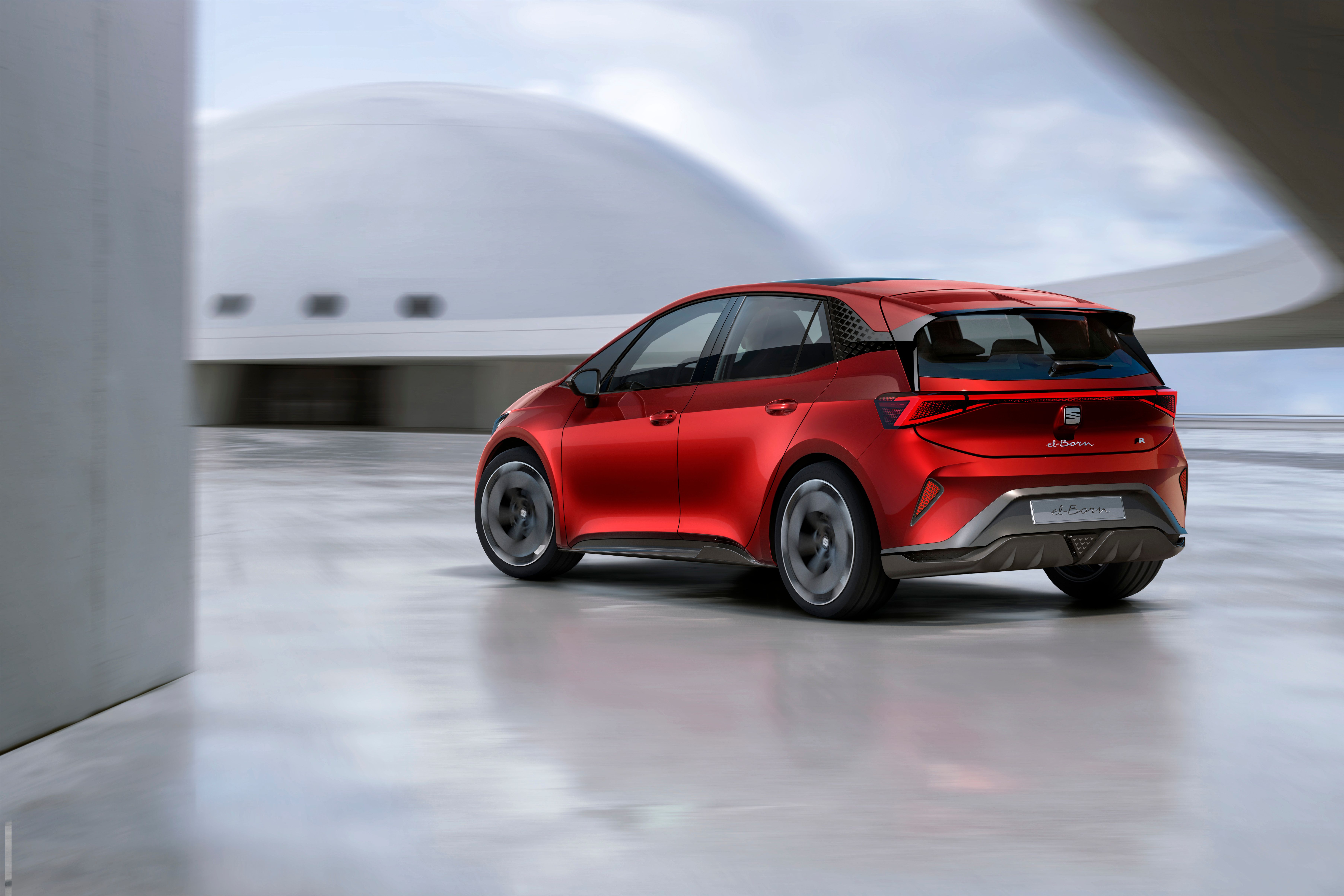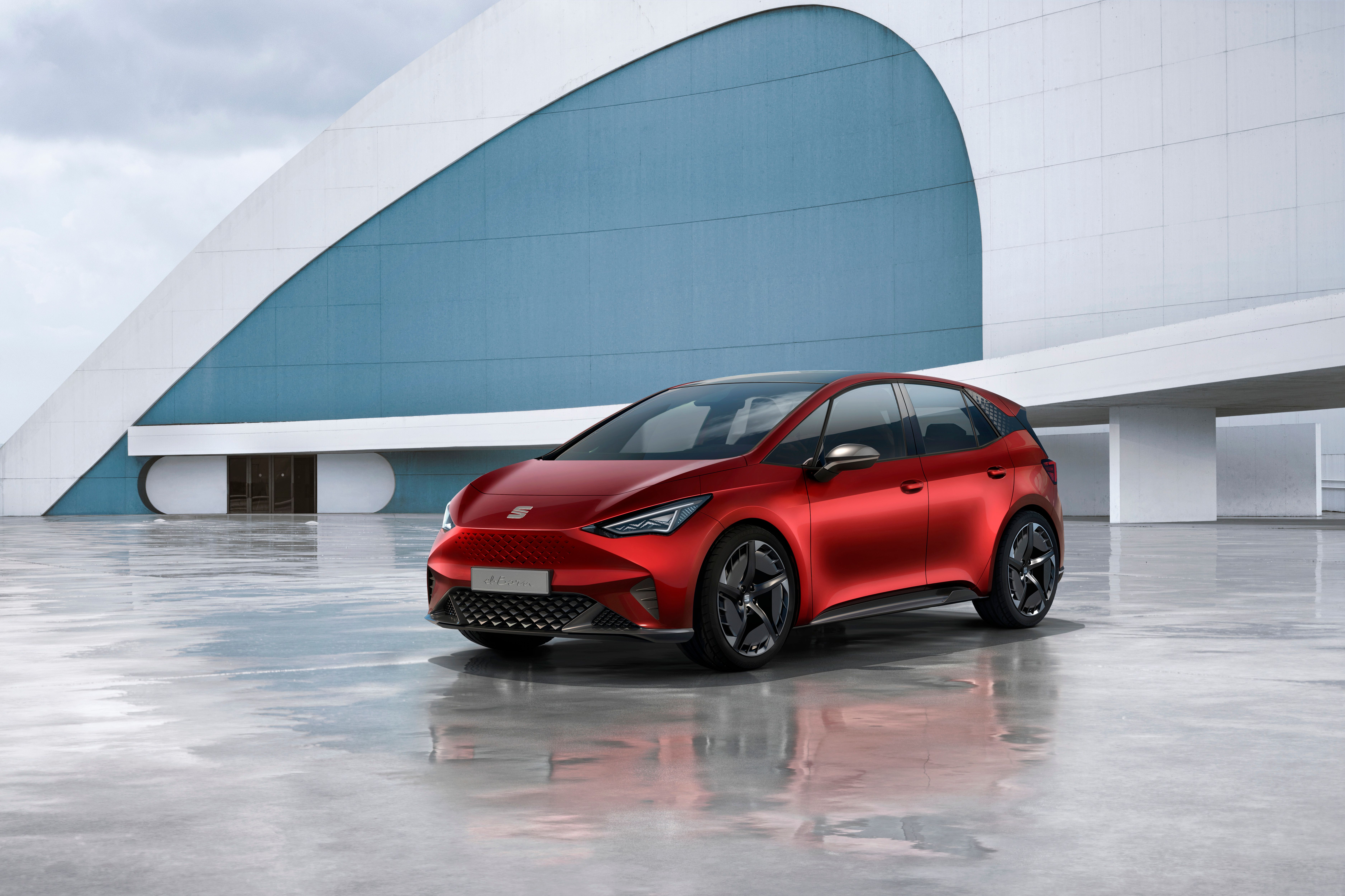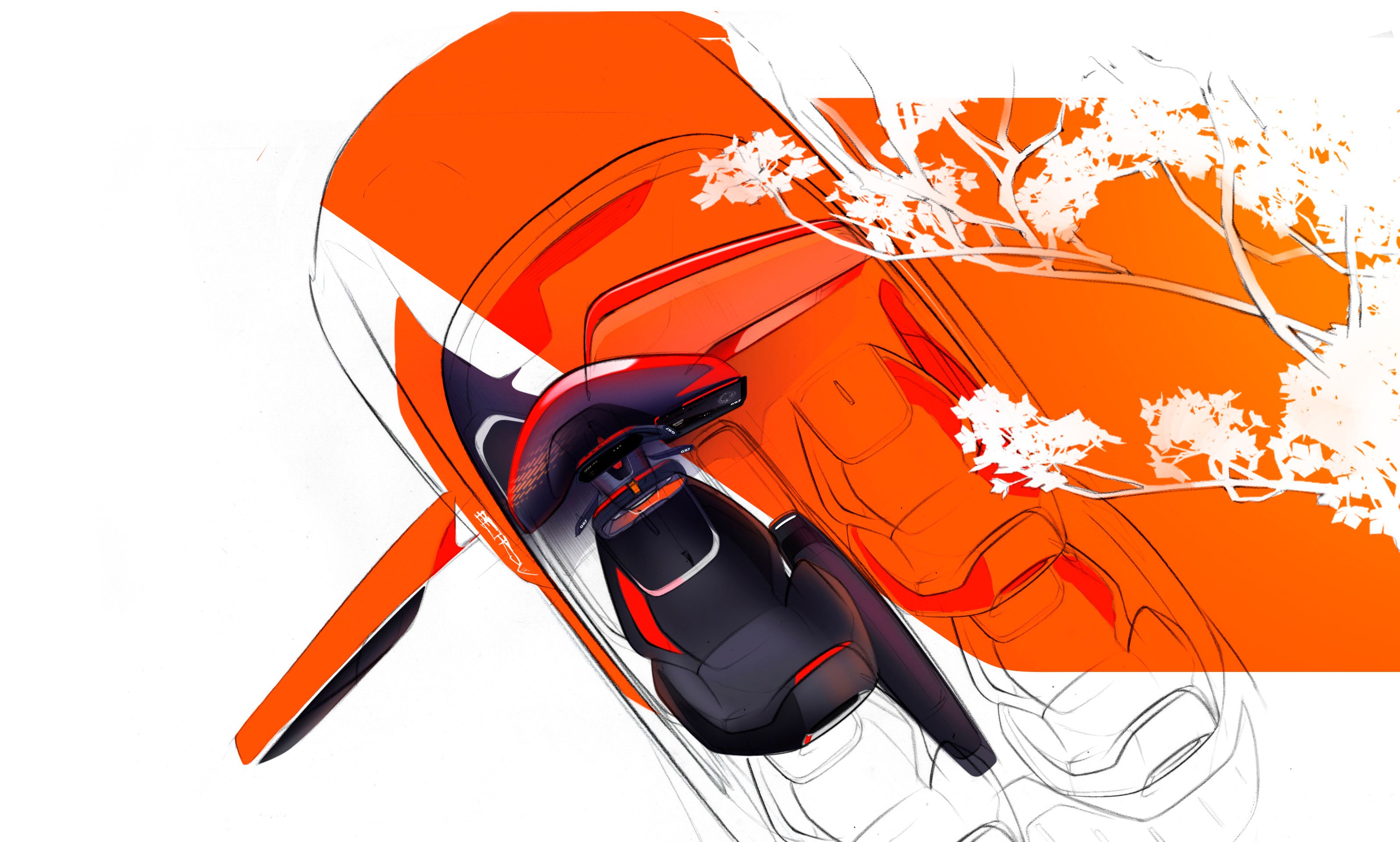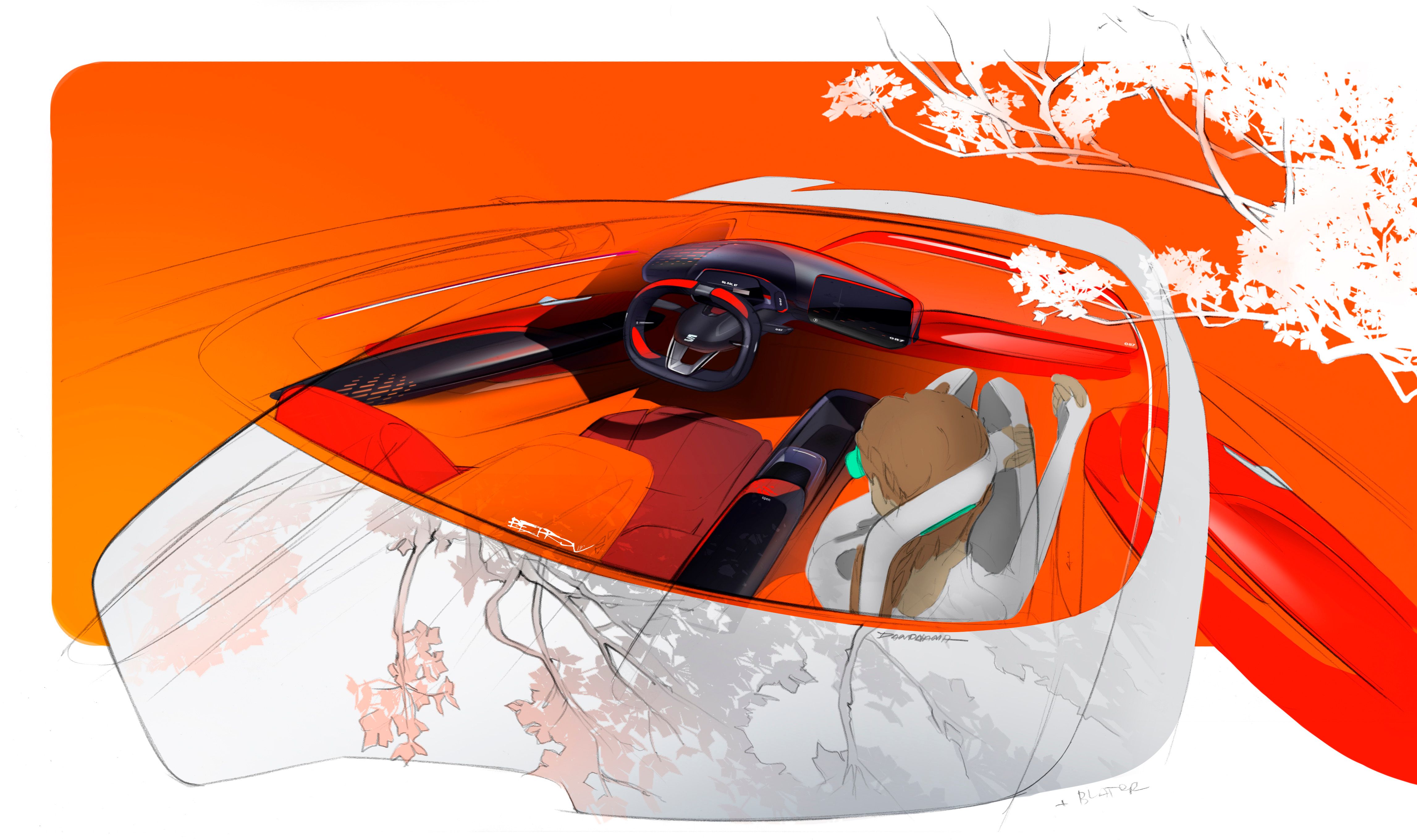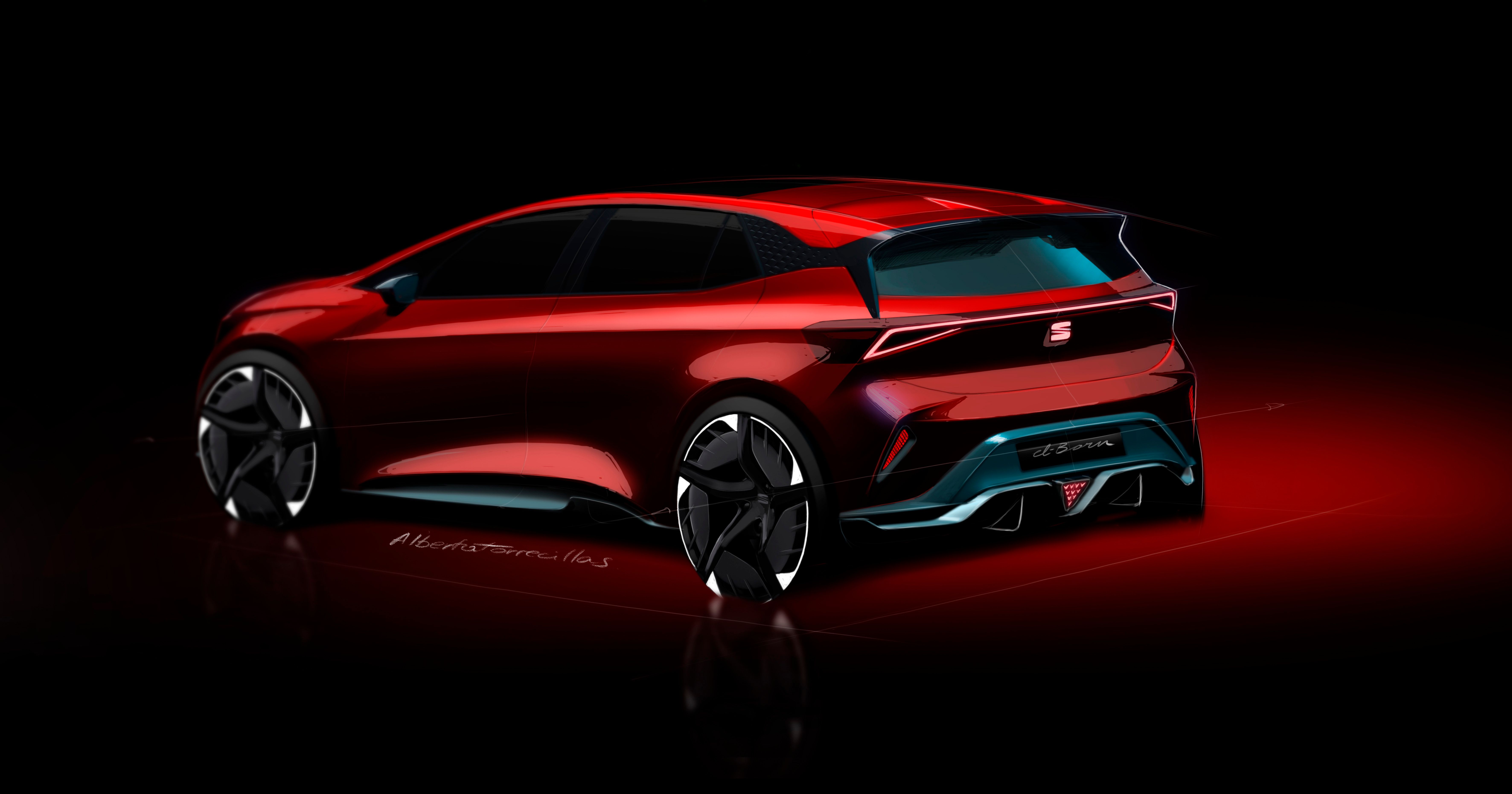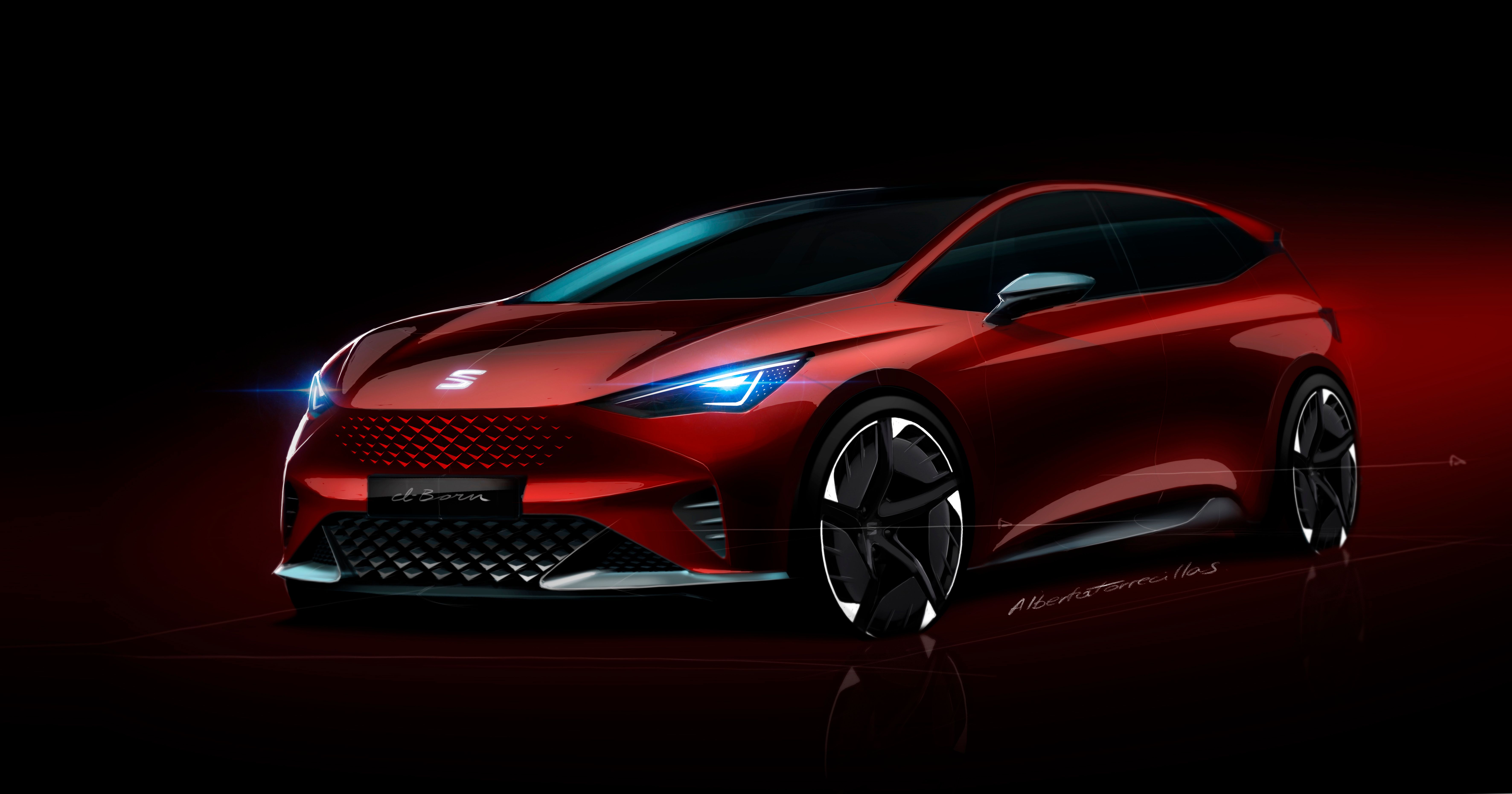SEAT may call the 2019 el-Born a concept, but it really isn’t one. This is essentially what SEAT’s first all-electric city car will look like, both inside and out. It is also closely related to the upcoming production VW ID hatchback, a model previewed by a considerably more far-fetched concept.
The El-Born’s design will pack a bit more punch than the VW, and as with every other SEAT model in comparison to its corresponding VW model, it will exude a sportier, more fun-loving character. The manufacturer says it “fuses the core aspects driving change in the automotive industry: electrification, autonomous driving, shared-mobility, and connectivity,” and that’s actually a pretty good way to describe what it’s meant to do.
In keeping with its aggressive design, the el-Born will offer nearly hot-hatch levels of acceleration, but at the same time, it promises to do well in the main area of concern when it comes to battery-powered electric vehicles: battery pack capacity and the range it can provide. But according to SEAT, el-Born will be right up there with the best of them, even with its range calculated using the new and more accurate WLTP guidelines. It might even offer two sizes of battery pack, just like its VW stablemate.
2019 Seat El-Born
- Make: Array
- Model: 2019 Seat El-Born
- [do not use] Vehicle Model: Array
Seat El-Born Exterior
The El-Born’s front and rear fascias are significantly different to what we saw on the VW ID concept.
From the side, it looks nearly identical to camouflaged prototypes of the production VW ID electric hatchback. They are the same, right down to the rear spoiler mounted at the top part of the hatch. Wheel designs are going to set them apart, though, and the Geneva-bound concept has some massive 20-inch rims with an aerodynamic design.
However, unlike other aero-enhancing wheel designs, these ones from SEAT are also surprisingly aggressive and fitting for the car. On most cars with such wheels, you usually just keep them on for their aero effectiveness, but on the El-Born you’d keep them on for style. Now whether or not the production version will come with 20-inch rims remains to be seen - if you keep in mind that there are other small EVs with with large wheels (think BMW i3), then this SEAT could have them too.
One detail that probably won’t make production is the diffuser area of the lower rear bumper complete with the triangular Formula 1-like central foglight. The double-layer spoiler in the back will make production, though, as it helps with smoothing the airflow over the car and it also looks pretty cool doing it.
Seat El-Born Interior
Most of the el-Born’s interior looks like it could go into production tomorrow. As with most modern car interiors, this one is also dominated by a big central infotainment display - in this case, a 10-inch screen. Underneath it are the controls for the dual-zone climate control and below that are the vents, and that’s about it.
For instance, there is one island with physical buttons for lighting; there are the buttons on the two horizontal steering wheel prongs, the controls for the windows, and the hazards button. That literally concludes mentioning all the buttons you’ll find inside the El-Born. BMW recently started doing this grouping of buttons into islands idea on its newer models and now SEAT has successfully adopted it too.
You wouldn’t expect to find a physical gauge cluster in a forward-thinking all-electric vehicle like this and it, of course, doesn’t come with one. Speed and important information is displayed on a single and rather small display located in front of the driver - the screen looks quite small; it’s maybe half the size of the main central screen.
SEAT says you will not be left wanting for passenger space inside the car either, although it doesn’t explicitly say how it was achieved - it’s a surprising claim given the fact that the roof slopes down dramatically towards the back, plus the fact that the floor will be raised because that’s where the battery pack is located.
Seat El-Born Drivetrain
The SEAT El-Born is powered by a 201-horsepower electric motor that drives the rear wheels.
With its 62-kWh battery pack, the El-Born offers a claimed one-charge range of 420 km or 260 miles and supports charging with up to a 100 -W fast charger that gets it to 80 percent in precisely 47 minutes, according to SEAT.
The El-Born will also (almost) be able to drive itself courtesy of Level 2 self-driving tech. It will also park itself and offer all possible connectivity and technology options available.
Final Thoughts
If the SEAT El-Born will undercut the equivalent VW all while offering more aggressive styling and a sportier twist to the formula, then it may have a shot to become really popular. It looks good on the outside - more like a hot hatch than a small people carrier - and its interior is packed with technology and modern amenities.
It also packs plenty of performance and the claimed range is not bad either - if you live in a city with at least decent charging infrastructure, you’ll probably rarely get range anxiety. It will also look good parked outside your favorite off the grid coffee shop, and it will undoubtedly get its own hashtag for the plethora of Instagram stories you’ll be featuring it in.
It is, however, being launched into a market segment that’s becoming increasingly competitive. Peugeot will probably beat SEAT to market with its new all-electric 208 e-tense that will, like the SEAT, debut at this year’s Geneva motor show. However, the Peugeot will be shown in full production form and, soon after, you will be able to put your order down for one, so SEAT needs to move quickly and get the vehicle out as soon as possible.
Further reading
Read our full review on the 2018 Seat Arona
Read our full review on the 2018 Seat Leon Cupra R ST
Read our full review on the 2010 Seat Ibe Concept.
Read our full review on the 2017 Seat Leon.
Read our full speculative review on the 2020 Volkswagen ID Neo.

